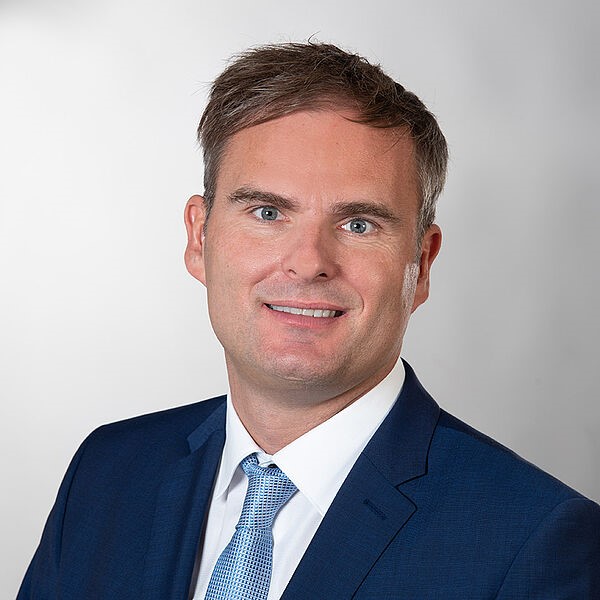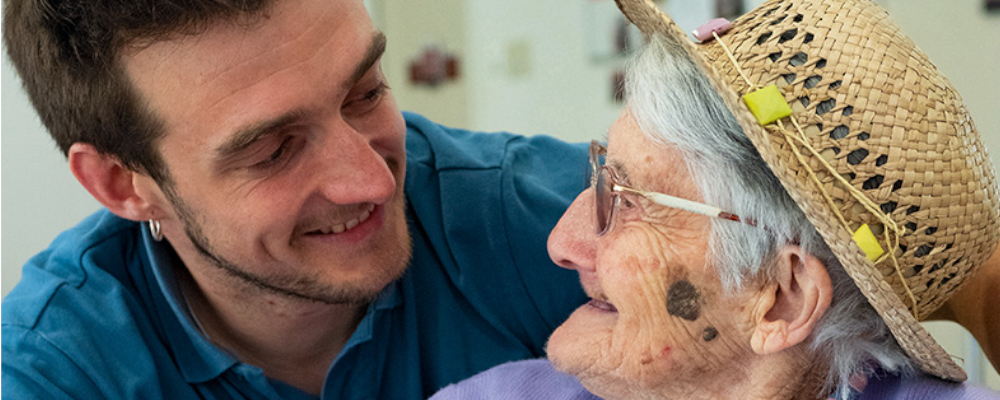How to integrate nursing staff from abroad? The BG Klinikum Hamburg has found a way that works perfectly for them.
Torsten Weiner puts it in a nutshell: “Germany cannot cope with the increasing number of retirees. We urgently need additional qualified personnel in Germany.“ The hospital in Bergedorf is therefore taking a consistent approach to recruiting. Last year, the Director of Nursing visited four cities in Mexico with Marilyn Vargas, an integration officer employed specifically for the purpose to recruit new nursing staff. With success, as 15 Mexican colleagues are starting in the nursing department at the hospital this fall. Around 70 specialists from Colombia, Albania, Serbia, Mexico and other third countries have already been recruited since 2020. But how does good integration work and what does it take?
Personal recruiting

“Personal contact with people is the first important building block,” says Weiner. An understanding of the culture of the country in question and an interest in people creates trust. How do Mexicans look after their old people and how do they teach at schools and universities? In addition, it quickly becomes clear whether an applicant is serious during on-site discussions.
“Have you already spoken to your family about your plans?” is one question put to applicants, for example, or “Why do you want to leave the country?”. When answering, many would realize what a big step the move to Europe is. But Marilyn Vargas‘ expertise also plays a role. The expert, who is originally from Colombia, helps with initial questions when it comes to staying in Germany: who will support me, which administrative procedures do I need to go through? “Trust is the key that we can offer people,” says the Hanseatic native.
German course and multilingual shared flats promote integration
The foundation of integration in Hamburg is a coherent concept for integration. The BG-Klinikum was the first German clinic to receive an award for this from the Berufsgenossenschaft für Gesundheitsdienst und Wohlfahrtspflege in 2023. But what does that mean? “Professional and social integration form the basis,” says Weiner. The nursing trainees are taught German in Mexico so that they arrive here with a B1 or B2 classification. Meanwhile, Skype calls with future employees help them get to know their colleagues and the language. When the trainee nurses arrive in Germany after a year, a warm bed and meals await them. “We place the specialists in various shared flats during the first few months. It is important to us to mix nationalities so that the focus remains on learning the German language,” emphasizes the nursing director. In-house German courses, which take place one to three times a week, provide support. It is important to pick people up in a playful and light-hearted way. Weiner explains: “There is no frontal teaching, instead the language acquisition is more like interactive playing and learning. In addition to the integration officer, specially trained social workers also help the recruits if problems arise. This creates a network of support right from the start.
With bread pudding and panel discussions
In the first few weeks after arrival, an adaptation training course takes place. The candidates go through various steps to compensate for differences in their foreign professional qualifications and their local qualifications. The majority of them have completed degree courses in their home country. The only dilemma is that these are not recognized in Germany. “We have to be aware of what a personal loss this is,” emphasizes Weiner.
Celebrating the holidays of the respective cultures is also important at the hospital. Festivals are noted in the calendar. At Easter, for example, a delicious bread pudding from Mexico, capirotada, is on the menu in the hospital kitchen. At the “Festival of Nations”, on the other hand, every country of origin is taken into account. People often eat, dance and laugh together.
At in-house panels such as “Nursing with an accent”, trainee nurses from Albania or Mexico report on nursing conditions in their home countries and the differences between them and German nursing. It becomes clear how great the shortage in the state healthcare sector often is. The number of private clinics abroad is increasing rapidly. These pay dearly for the nursing service.
In-house training ward
The BG Clinic will also be opening its own training ward from April this year. The idea is to make it easier for international employees to get started. Mentoring programs also support new arrivals. For example, they learn how to behave on the phone and what information is important during a conversation.
Furthermore, there are no complex patients on the ward and the phone doesn’t ring quite as often as on a “normal” ward, says Weiner, describing the concept. “There is a whole new way of learning and arriving here. Language or interpersonal barriers can be looked at and broken down,” says the nursing director. He knows that integration takes up to three years. It includes arriving, gaining qualifications and building up social networks. “After this time, the center of life has shifted to Hamburg and the people are well integrated,” says Weiner.
Reasons for emigration
Violence is very high in many Mexican states. Crime and drug offenses are the order of the day. Last year alone, 32,000 homicides were registered. Many Mexican women fear for their lives and those of their families. This fear, the job prospects in Germany and the social security are the reason for many to move to Europe. Things we take for granted, such as a pension or continued payment of wages in the event of illness, are not a given in Mexico. Weiner knows, for example, that Mexicans only receive a pension up to the age of 72. But when they get older, they no longer receive any money from the state and slide into poverty in old age.


